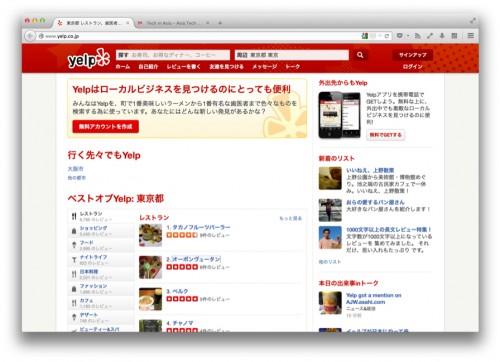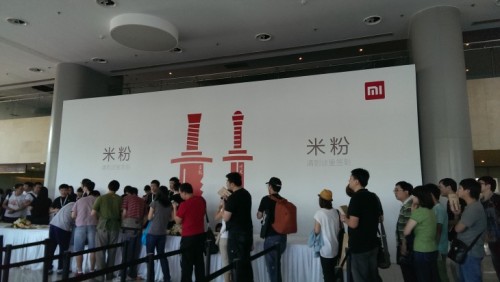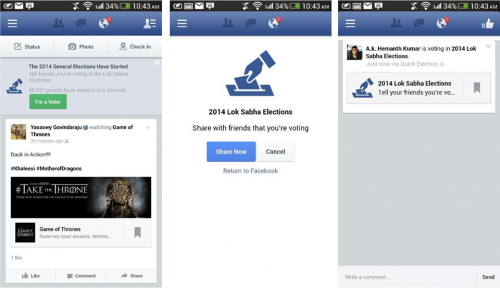We Are Social Asia Tuesday TuneUp #121
CABCY video gets shorter as it’s shared
Singapore’s ‘Coalition Against Bullying for Children and Youth’ has created a social video with a real sharing incentive. The video, originally 100 seconds long, shows a child in distress. It gets shorter and shorter each time it is shared on Facebook, and is accompanied by the tagline ‘Share it to End it’.
Facebook passes 100m users in India
India is now Facebook’s second largest national market (after the US), as the network passed 100 million users there. It expects further rapid growth as it increases its mobile focus in a country where eight in 10 users are mobile.

Yelp launches in Japan, its second market in Asia
Community-sourced restaurant review site Yelp has formally launched in Japan. This is its second entry into Asia, after Singapore in 2012, and the 26th country to receive Yelp. Opening in Japan comes with its own unique set of hurdles, such as the handling of the character set, as well as competing against popular review site Tabelog.
 Just 5% of users contribute to 90% of all Weibo posts
Just 5% of users contribute to 90% of all Weibo posts
According to a study, Chinese microblogging platform Weibo was found to have a sizeable content gap between its users. Only 10 million users post original content, while the other two hundred million other users are made up of spam or empty accounts, or users who just repost others’ content. Reasons for the small percentage could be due to the large amount of spam accounts, or competitors such as WeChat gaining popularity in China.
Xiaomi’s social media strategy drives fan loyalty
Chinese smartphone maker Xiaomi has a fiercely loyal fanbase, and a lot of this lies in the way it engages its fans and customers with social media. Xiaomi uses social media in several ways – to drum up excitement about its flash sales, as well as engaging fans and customers in an informal and playful manner, much like how friends speak to each other. Its recent Mi Fan Festival saw 1.3 million handsets sold across China, Hong Kong, Taiwan and Singapore, raking in CNY1.5 billion (SGD302 million).

Facebook and YouTube launch unique add-ons for India Elections 2014
For the 16th Lok Sabha Elections, Facebook has launched a ‘I’m a Voter’ button for its users in India, which allows users to post their voting stories on their timeline, sharing with friends that they are voting in this election. YouTube has also launched a India Elections 2014 page, which has garnered over a thousand subscribers. The page features a curated list of videos, aimed at providing a one-stop source of news on the elections.

Most social networks are predominantly mobile
The 2014 US Digital Future in Focus Report has been released, with interesting figures about the growth of mobile and social. Of major social networks, only two (Tumblr and LinkedIn) are predominantly desktop (among US users aged 18 and up).

Snapchat, Vine and Instagram are, as expected, the most ‘mobile-first’ social networks, each seeing almost all of their traffic from non-desktop devices. The three sites have grown their unique visitors figures significantly between February and December 2013 – Instagram by 43%, Vine by 515% and Snapchat by 234%.

Most social content is shared from mobile
It’s not just user growth where mobile is steaming ahead, but also the volume of shared content. Of everything shared to social networks in Q1 2014, 52% came from a mobile device, compared with 48% from desktop. This resulted from much stronger volume growth on mobile: 28% against desktop’s 11%.

Photos are most popular Facebook content for brands
Despite Facebook pushing brands to use links, it’s clear that photo posts remain the most popular content type for brands on the network. Analysis of over 30,000 brand posts found that 75% were photo posts, followed by just 10% including a link.

This is perhaps no wonder, when we look at the most engaging content types: photo posts make up 87% of the top 10% of branded content.

Facebook to remove messenger from mobile app
In an attempt to keep up with standalone messaging apps, Facebook is planning toremove the ‘Messenger’ function in its main mobile app, forcing users to either download the standalone app or lose the service entirely.
Facebook launches new ads as prices increase
As brand pages’ organic reach has dropped throughout Q1, Facebook ad prices have increased by 10%. This news comes as Facebook has announced a new format for ads in the right hand bar; the network has claimed that these will increase engagement and allow brands to use the same image for News Feed and right-hand bar ads.

Facebook looks to reduce News Feed spam
Facebook is making some changes to its News Feed algorithm that will decrease the reach of certain types of content, each of which is considered ‘spammy’. The initial targets of these changes are:
1. Pages that repeatedly post images asking for likes, comments and shares
2. Frequently-circulated content that users have already seen
3. Spammy links that bring users to pages full of ads
Facebook has looked to reassure pages that this is unlikely to negatively affect their reach; it states that most publishers are not posting ‘spam’ and should instead expect to see their reach increase slightly.
Facebook is updating privacy settings
Facebook is attempting to make its privacy options clearer to users with a series of tests. As can be seen below, the iOS app will include details of who can see any post above the publishing box (left), while desktop users will notice a change to the drop down menu (right).

There will also be pop-up messages for users who haven’t updated their preferences in a while, straight from the mouth of the privacy dinosaur.

Twitter renovates profiles
It’s all change in the world of Twitter this week, as the platform announced a complete overhaul of users’ profiles on desktop. Changes include a larger profile picture, customisable header, and the ability to pin a particular tweet to the top of your profile (though it’s worth noting that this will only be available for free to certain high-profile users or paying accounts). A user’s more engaging tweets will now appear larger on their profile, too. The new style, which is in the process of being rolled out, can be seen here:

Some brands have already begun using the new design. The below, for example, displays Skype’s videos – users can now filter tweets to see just photos or videos.

The move is being seen as part of a larger attempt to make the network more accessible for the less tech-savvy among us; technical ‘jargon’ like RT and @replies may be at threat, while the network looks to concentrate more on video/images and add emoji functionality. Users are beginning to get notifications on Twitter.com, too, which are fully customisable; anyone can choose what actions they get notified about. All of this, along with the design of the above profiles, has led to a number of comparisons with Facebook and rumours of a ‘land grab’. Watch this space.
Twitter adds 15 new ad types
Twitter will also be ramping up their ad offering, with news that they’re planning 15 new types of ad, such an ‘app-install unit’. This news comes at a similar time to figures that suggest Twitter’s ads receive a higher click-through rate than Facebook’s. Advertisers still spend a lot more on Facebook advertising, as we can see here:

Moreover, Facebook ads reach much further than their Twitter equivalents. Twitter may get higher click-through rates, but Facebook still earns a much higher volume of clicks and impressions.

LinkedIn removes ‘Products & Services’ tab
LinkedIn has today removed the ‘Products & Services’ tab from company pages. The network has proposed two different ways around this for brands: they can discuss their offerings in either company updates or the ‘showcase’ pages that LinkedIn has designed for this purpose.
Disqus introduces ‘Sponsored Comments’
Disqus, the commenting platform used by many popular blogs (including this one), has this week launched a native ad product, known as ‘Sponsored Comments’. It launched the new unit in a blog post, in which it looked to reassure users that it would maintain the quality of their experience. The adverts will appear as follows:

Unilever’s multi-brand YouTube channel
Unilever is launching a multi-brand YouTube channel, named ‘All Things Hair’. Brands including Toni & Guy, Dove and VO5 will all host content on the channel, which is taking much of its content from famous video bloggers.
Oreo brings Snack Hacks to online video
Oreo has launched a series of web videos dubbed ‘Snack Hacks’, which showcase unusual ways of eating the snack. After asking Twitter followers to discuss their favourite #OreoSnackHacks, the brand has since taken the campaign to the next level and produced content of its own. One example, featuring celebrity chef Roy Choi, is presented in this video.
Peter Griffin is now on Instagram
American cartoon, ‘Family Guy’, has created an Instagram account for its protagonist, Peter Griffin, to drive downloads of a new mobile game based on the series.
WWF creates Snapchat campaign
The World Wildlife Fund is using a Snapchat campaign to raise awareness about endangered species. Dubbed #LastSelfie, the campaign plays on the trend for a constant stream of self-taken photographs on the platform.